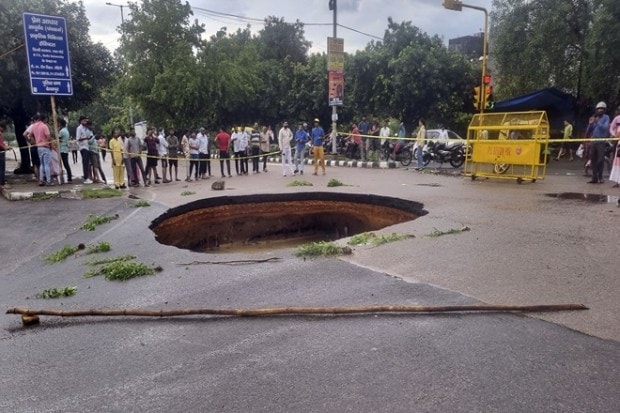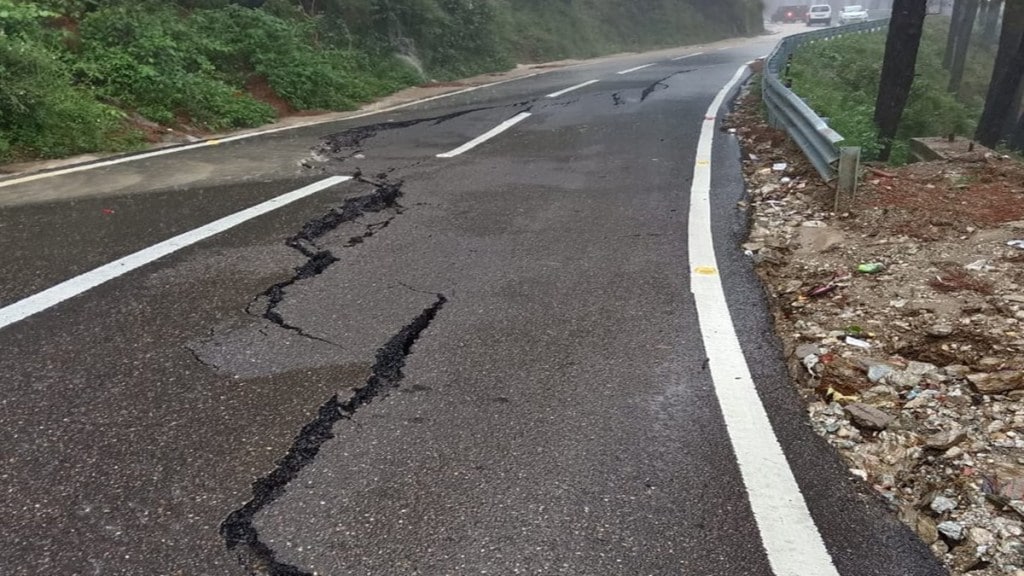Pictures and videos of Delhi roads caving-in to the heavy rainfall in the city have been going viral on social media. Residents of Rohini registered over 200 complaints of waterlogging and two complaints of road cave-ins on July 9, as the city received downpour for the third day.
Delhi has seen quite a lot of rainfall on the weekend, more than what it usually receives over the whole month of July. As per the data provided by the Indian Meteorological Department (IMD), the national capital usually gets 195.8 mm of rainfall in the month of July. However, over the weekend that went by, Delhi broke its 41-year-old record for receiving the most rain in 24 hours. On July 10 alone, the city saw 105.8 mm of rainfall.
What’s even more eye-catching is the fact that Delhi received 34% of total rain on the weekend that it usually receives during the whole year – a total of 258.8 mm as against the annual average of 762.3 mm, IE reports.
Cracks on National Highways
The heavy rainfall has led to quite a struggle amongst the commuters, especially when the roads are all waterlogged and have also started developing cracks. A portion of National Highway 3 meanwhile got washed away by the overflowing Beas River in Kullu.
Large cracks were seen developing on the Chamba-Pathankot national highway, post which the route was blocked, reported ANI.
Kullu Police told ANI that the movement of vehicles from Kullu and Manali towards Atal Tunnel and Rohtang has been completely halted. Heavy rainfall has also led to the falling of stones at the Kullu-Manali road.
In some more visuals shared by ANI on July 9, a bridge connecting Aut-Banjar was washed away as the Beas river was seen flowing ferociously in the Mandi district.

As per IMD officials, there is more to come. People of North India can expect more rainfall in the coming days. Delhiites can expect light to moderate rainfall on July 10, with a yellow alert in place, reported IE.

